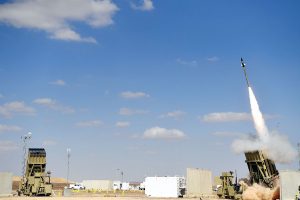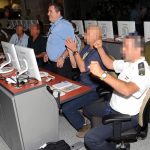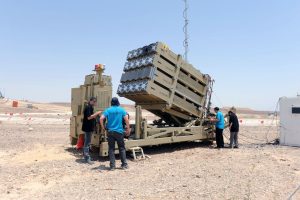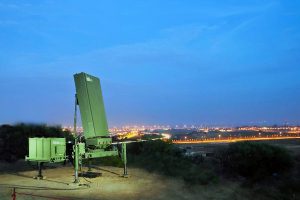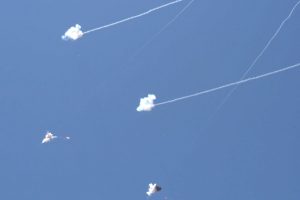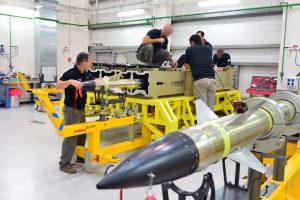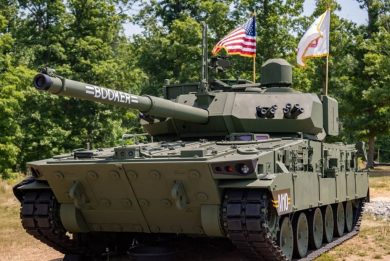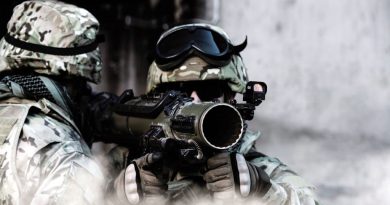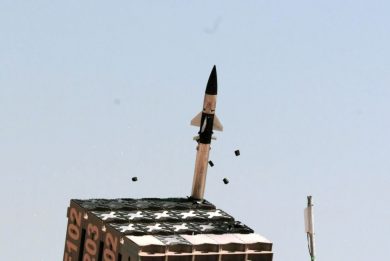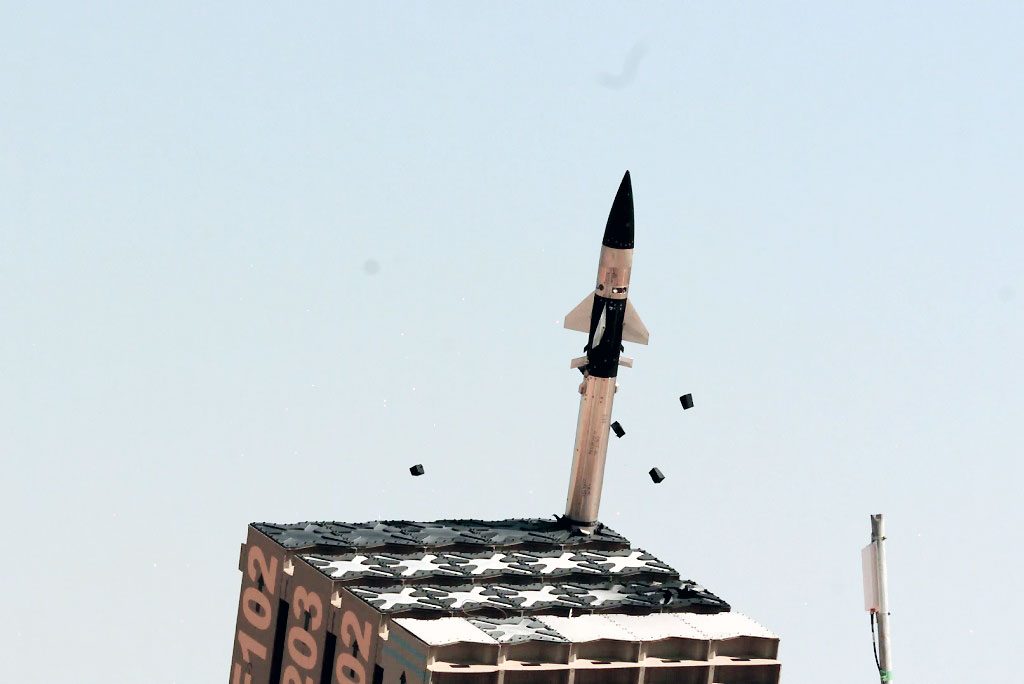
Rafael: 10 years of Iron Dome intercepts
By Paolo Valpolini
‘Iron Dome Successfully Intercepts Gaza Rocket for First Time’ this was the title on the website of Haaretz, the longest running newspaper currently in print in Israel, on April 7th, 2011. Therefore today 10 years have elapsed since that first intercept.
EDR On-Line talked to Brig. Gen. (res.) Pini Yungman, Rafael’s Executive Vice-President, who has served for 26 years as an active duty officer in the Israeli Air Force, and more specifically in the Air Defence branch, and since his retirement he maintains his reserve position while working at Rafael, in the same branch he served in his military duty, climbing up to his current position as General Manager for the Air and Missile Defense Systems Division.
“Israel suffered the threat from rockets and short range ballistic missiles since the Six Days War period, and then during the Yom Kippur War, and since 2001, we started getting them from the Gaza strip. The Qassam and Grad rockets were hitting civilians around that area, including big cities like Ashkelon and Ashdod. For years that threat was not considered a strategic issue, however after the Second Lebanon War in July 2006 this changed. We were hit by around 4,000 rockets launched from Lebanon, the economic damage was huge, so the Government decided that the rocket and short range missile threat could not be considered anymore a tactical issue; even if the single weapon was tactical, the massive launch that caused over one million citizen to move southward to safer areas was definitely a strategic issue,” Pini Yungman explains.
This triggered the decision to establish a Committee, the so-called ‘Nagel Committee’ named from Jacob Nagel, who was then the deputy head of defence R&D at the Israel Ministry of Defence and who headed the committee. “The Committee received 24 proposals from Israeli as well as international companies related to possible solutions to the problem. Many ideas came to the table, including laser-based systems, and the Committee carried out an evaluation based on technical and operational elements. Parameters included not only the capability to intercept rockets, but also issues such as cost, in order to allow fielding it in numbers to counter the type of saturation threat seen in 2006. The price of the interceptor had therefore to be very reasonable, to allow production of thousands of missiles, and the system should be able to be used against hundreds of incoming projectiles. We ended up convincing the Committee of the soundness of our solution, the Iron Dome, bringing before its members all the engineering work we did as well as a number of simulations, and in the end we were selected among the 24 initial proposals.”
The green light for the programme was given by Israel Ministry of Defence in December 2007. “We were required to design and develop it in the fastest possible way, in order to give air defence units the new capability in the shortest time, to counter the threat coming at that time mainly from the Gaza strip,” Pini Yungman says.
“The Iron Dome became our number one priority, so we put the best engineers, mixing experienced and younger ones, working in parallel on all the system sub-assemblies, in order to get the best cost-effective solution,” the current GM of the Air and Missile Defense Systems Division remembers. The Iron Dome was developed together with IAI-Elta, which was in charge of the multi-mission radar, and mPrest, a subsidiary of Rafael, responsible for command and control, Rafael being the prime contractor, the budget manager, and being responsible for system engineering, integration, launcher, and interceptor, the latter being the key element in establishing the performances and capabilities of the whole system, and dictating the design of all the other elements. “The heart of the system is the Tamir interceptor, in which we put all our efforts to get the best we could.” In slightly more than three years from the go, in March 2011, two batteries with a first batch of interceptors were delivered to the Israel Air Force. And not much later the first intercept took place, on April 7th.
“In fact production started one year before the delivery of the first batteries, even before finishing the full development, as we understood that we needed to work in parallel in order to reduce the in-service time, even if usually many of those activities are done in sequence. It was not the less expensive way to proceed, but what was at stake was too high as it was not only an economic problem, it was human lives, it was the way of life, so the extra cost of that quick development was pretty low compared to the tangible and intangible damages caused by the threat.”
Beside being a military weapon, the Iron Dome proved to have a considerable impact on politics. “The behaviour of our decision makers changed once the system was deployed; previously, the reaction to rocket launches was to enter Gaza with military forces, now that was not the case anymore, so we can say that the Iron Dome saved lives on both sides,” Pini Yungman underlines.
Since April 7th, 2011, some 2,500 Tamir interceptors have been fired in anger, while a few hundreds were used in tests, bringing the total number of interceptions to over 3,000.
However the Iron Dome is not only a hard kill system that neutralises rockets and missiles launched from neighbouring countries, another major role is that of warning the population of the incoming threat in what is a form of soft kill, as it neutralises the effects allowing people to take shelter. “The Iron Dome radars and the electro-optic sensors are key in providing warning, which is another element that saves lives, the alert system allowing enough time for the people to find shelter in protected structures,” the PM Air and Missile Defense Systems Division tells EDR On-Line. A 100% reliability does not exist in any system, the Iron Dome providing around 90% of intercept probability according to official sources, “but 10% remains a lot when big numbers are considered.” As the Iron Dome command and control systems avoids launching when an incoming threat is not aimed at a sensible target, 10% of 2,500 combat engagements makes 250, which is a considerable number as these are mostly aimed at areas where they might cause heavy damages and loss of lives. The warning provided by the array of radars deployed in potentially dangerous locations, together with the E/O sensors, remains therefore of paramount importance. And Pini Yungman tells us that in Tel Aviv, during one of the major recent attacks, people getting a coffee at a coffee shop were just leaving their cups on the table, reaching the shelters, and a few minutes later they were back sipping their coffee.
As threat evolves, Iron Dome has evolved consequently since its first appearance on the battlefield. “Since the first interception, we started upgrading the system on a daily basis, bringing to the operators improved performances. Today we can neutralise any kind of threat within the range of the interceptor; in the beginning we could intercept only short range rockets, today we can intercept many different types of threats, air breathing, cruise missiles, UAVs, and longer ranges rockets and missiles, that fall within the system envelope. The key thing is that we didn’t changed the system hardware, we only upgraded the software, thanks to the way we designed the Iron Dome since inception. So what we did in the last 10 years was to stretch the physics to the limits by changing algorithms.” According to Pini Yungman this was possible also thanks to a team of engineers who worked on the Iron Dome programme since the very beginning, and is totally dedicated to this mission, that in the end means defending their own families. Very recently the Iron Dome was successfully tested against complex scenarios that included the simultaneous interception of multiple UAVs, as well as a salvo of rockets and missiles (click HERE to read the press release).
While until now only the software was affected by upgrades, in the future Rafael is apparently looking at increasing the range, which will obviously require a new effector. “This is true,” Pini Yungman confirms, “although we must remember that in Israel we are not relying on a single system, David Sling being the upper tier for the Iron Dome, aiming at engaging longer range and other threats while protecting wider areas, the further layer being provided by the Arrow. That said, we want the Iron Dome to become capable of engaging threats at longer ranges, but this is not the only thing we are looking at, as we are also thinking what might be the potential threat we will face in the future. So we are developing today solutions to defeat the next generation threat, that we assume will materialise in the future. We know that what is being developed now in Iran will at a later stage be deployed in Lebanon, and later on in Gaza,” he explains, no more details being obviously provided. Pini Yungman tells us that the cost of the David Sling effector is much lower than that of existing systems of equivalent class; the missile, developed in cooperation with Raytheon and known as Stunner or SkyCeptor in the US, was offered by the US company to Poland stating that it “costs a fraction of other hit-to-kill interceptors,” referring to it also as LCI, for Low Cost Interceptor.
Remaining in the United States, the US Army intends using the recently delivered Iron Dome batteries for protecting deployed forces. “They acquired two batteries as an interim solution,” Pini Yungman explains, “and they are now learning the performance of the system, and I am sure that if they will be satisfied with its capabilities and they will decide to buy more of them, they will integrate them into the US system, as the concept in which the Americans are operating their air defence assets is slightly different from ours. So they will probably take the best from the Iron Dome and integrate that into their system.” There will be definitely many more candles on the cake in the years to come for the Iron Dome, in Israel and internationally.
To read Rafael’s Press Release titled ‘Rafael marks 10 years since Iron Dome’s first combat interception’ please click HERE
To read all about Iron Dome and get access to the latest information, videos and images, please click HERE
For a special 10th anniversary video please click HERE
Photos courtesy Rafael and IAI

